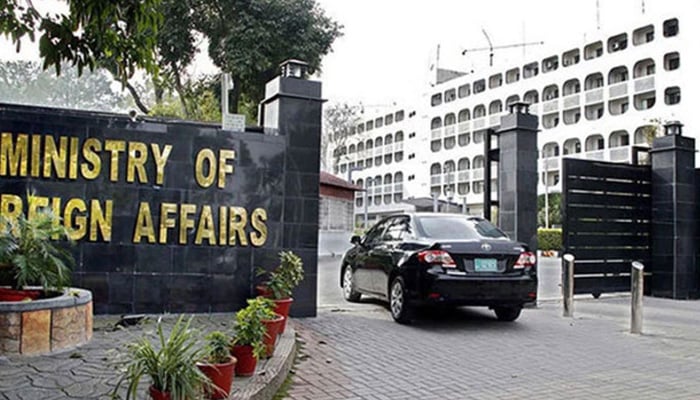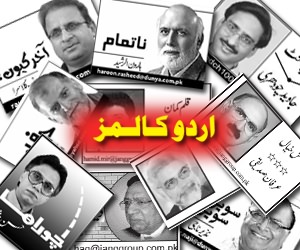What to know about the Pakistan-IMF deal
Posted By: Akbar on 14-05-2019 | 06:43:16Category: Political Videos, NewsIslamabad has once again been forced to approach the lender but the loan is a stopgap measure and Prime Minister Imran Khan’s government has to take difficult steps to resurrect the economy.
After months of back and forth talks, Pakistan has finally secured a badly needed $6 billion ‘bailout’ loan from the International Monetary Fund (IMF).
While exact details of the deal haven’t been spelt out, the lender wants Islamabad to confront longstanding issues like low tax revenue collection and power sector reforms.
The government of Prime Minister Imran Khan, who took office last August, has been criticised for dilly-dallying on IMF’s help for months in hopes that preferential loans and aid from allies can avert a balance of payment crisis. That didn’t work.
Pakistan’s economy has slowed, prices of fruits and vegetables have shot up and exporters in the key textile sector have struggled.
In sweeping changes to his cabinet last month, Khan removed finance minister Asad Umar, a close aide, and replaced him with a technocrat Abdul Hafeez Shaikh.
This is the 13th time since the 1980s that Pakistan has entered an IMF programme, which will run a course of three years.
Shaikh says Pakistan needs to come up with $12 billion this year to bridge the gap between its foreign currency holdings and what is required to pay for loans and imports.
Beyond the fund
Compared to Pakistan’s total foreign debt of $90 billion, the IMF loan comes to just around $2 billion a year, which doesn’t add up to much.
But Saad Bin Ahmed, head of equities, at a Karachi-based brokerage house, says the deal helps restore the confidence of foreign investors, which is more important than the actual amount to be received from the fund.
“Entering the programme was essential because it would allow you to raise money from the other avenues,” he told TRT World.
“It gives an assurance to all the other players in the market that now you can support Pakistan because it’s getting disciplined.”
IMF loans usually come with stringent conditions. Officials indicate that Islamabad would have to phase out subsidies from its power sector, go after influential tax evaders and curb financing of militant organisations.
“Pakistan offers an opportunity to foreign investors in sectors such as food processing, energy and autos. Demand for these products hasn’t receded,” Ahmed says.
Shaikh, the finance advisor, had taken Pakistan through its most successful privatisation period in the early 2000s when he was responsible for divesting government's stake in state-owned companies.
Raise the tax
One area where the IMF has put a lot of focus is tax collection. Pakistan has for years struggled to raise its tax revenue and bring more people and organisations under the tax net.
In the six months between June and December 2008, its fiscal deficit—the shortfall in government revenue—increased to 2.7 percent of the GDP from 2.2 percent in same period of previous year.
That was mainly because Islamabad is using more than half of its revenue to pay for loans and defence spending, which are a major burden on the economy.
The deficit in the second half of last year was around $7 billion, which the government bridged by borrowing from local banks and friendly countries such as Saudi Arabia and China.
The reliance of Khan’s government on domestic borrowing not just crowded out the private sector but also stoked inflation to more than 8 percent, which has raised tempers in the month of Ramadan.
Earlier this month, Khan replaced the head of the country’s tax body, the Federal Board of Revenue, and appointed a reputed tax consultant to oversee the system.
Let it float
Under the agreement, the IMF is pushing Pakistan to let market forces decide the value of the rupee against the US dollar.
The Pakistani Rupee has devalued by more than 17 percent in the past year.
For two years, the State Bank of Pakistan has intervened in the foreign exchange market - buying and selling foreign currency - to artificially inflate the rupee, which badly affected exports.
“And now we don’t know what the exchange rate is going to be in the next couple of weeks. There’s total confusion,” says Shabir Ahmed, a leading bedwear exporter.
A sudden depreciation in the rupee’s value in recent months had added to an increase in the price of products such as baby milk, which the country imports.
Yet a complete free float is not possible as the market doesn’t has the depth to manage the large difference between foreign currency that comes in and goes out of the country, says Saad bin Ahmed.
“IMF has been demanding this for years but I don’t see any major shift from how the rate is managed at the moment,” he says.
Multiple IMF programmes, including the last which ended in 2016, haven’t helped Pakistan deal with weaknesses that have led to the balance of payments crisis.
The last programme did help boost foreign exchange reserves for a time and made Pakistan’s capital markets attractive to foreign investors. However, that didn’t motivate the government to address more pressing issues.
“Just like the previous government ( of ex Prime Minister Nawaz Sharif), this administration has not bothered to ask what we, the exporters, want,” says Shabir Ahmed.
“I don’t see things getting better any time soon.”

 Good News For Karachi - Opening Of Malir Expressway
Good News For Karachi - Opening Of Malir Expressway
 PIA Increased It's Operational Fleet
PIA Increased It's Operational Fleet
 Bollywood Actor Govind Namdev Clarification On Dating 30 year Old Shivangi Verma
Bollywood Actor Govind Namdev Clarification On Dating 30 year Old Shivangi Verma
 Imran Khan Cases Updates 190 Million Pound case Hearing
Imran Khan Cases Updates 190 Million Pound case Hearing
 Chief Minister Sindh Murad Ali Shah Speech
Chief Minister Sindh Murad Ali Shah Speech










